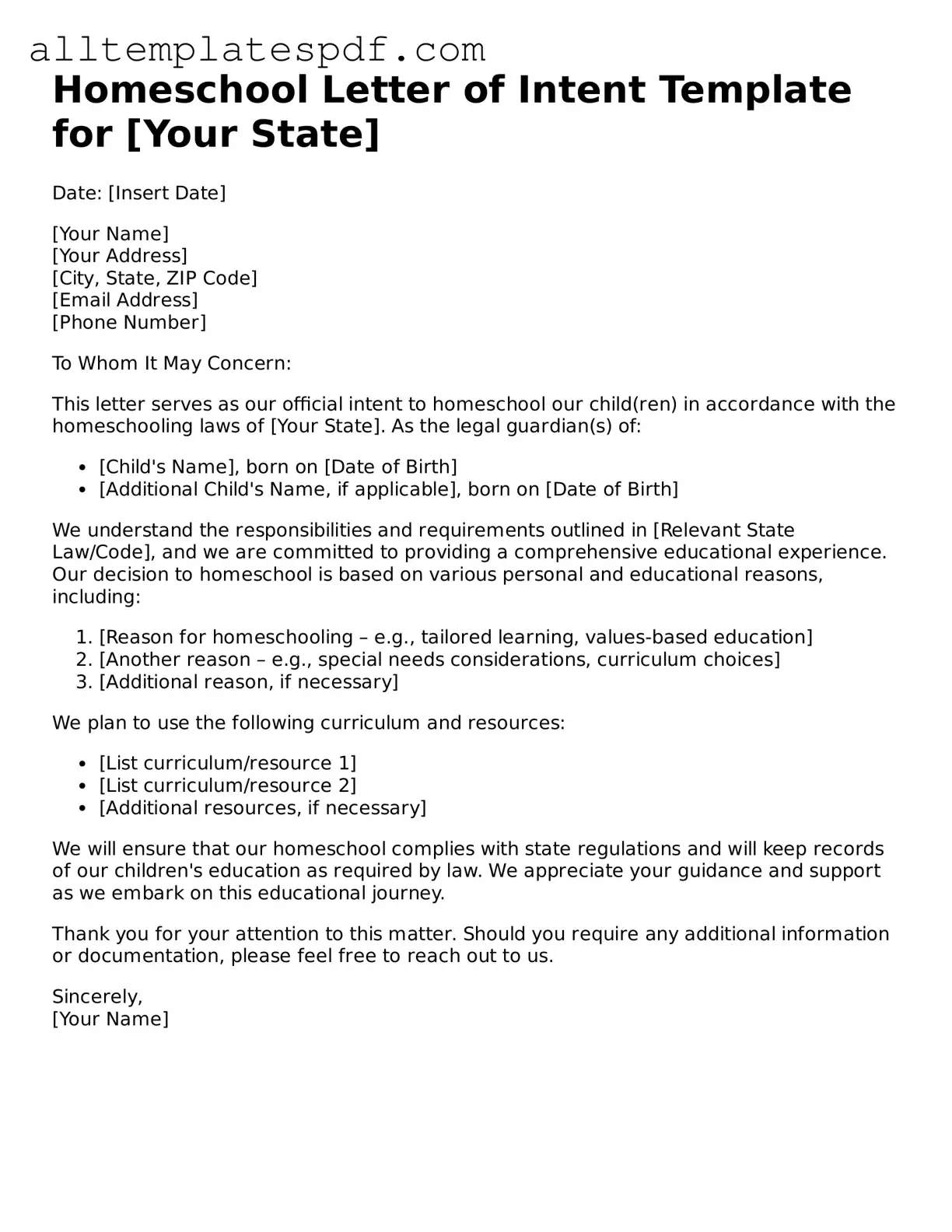Filling out the Homeschool Letter of Intent form can be straightforward, but many people make common mistakes that can delay the process or lead to misunderstandings. One frequent error is not providing complete information. This form typically requires details such as the child’s name, age, and educational goals. Omitting any of these details can result in the form being rejected or returned for additional information.
Another mistake is failing to sign and date the form. A signature is often necessary to validate the document. Without it, the intent to homeschool may not be recognized. It’s important to double-check that all required signatures are present before submitting the form.
Some individuals overlook the specific requirements set by their state. Each state has different laws regarding homeschooling, and the Letter of Intent may need to meet certain criteria. Researching state regulations beforehand can help ensure that the form is filled out correctly and complies with local laws.
Additionally, people sometimes forget to keep a copy of the submitted form. It’s advisable to maintain a record for personal files. This can be useful for future reference or if any questions arise regarding the homeschooling status.
Providing inaccurate information is another common issue. For instance, listing the wrong age or educational level of the child can lead to complications. It’s essential to verify that all details are accurate and reflect the current situation.
Some parents may also neglect to update the form if there are changes in their homeschooling plans. If a child moves to a different grade level or if the educational approach changes, the Letter of Intent should be amended accordingly. Keeping the form current is crucial for compliance with state regulations.
Lastly, individuals might submit the form without checking the submission deadline. Each state has its own timeline for when the Letter of Intent must be filed. Missing this deadline can result in penalties or the inability to homeschool legally. Awareness of these deadlines is vital for a smooth homeschooling experience.
